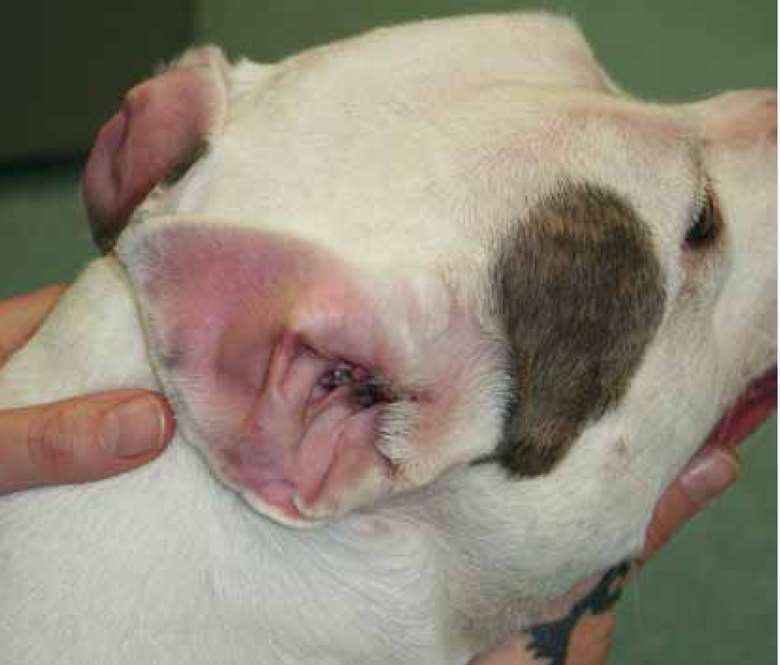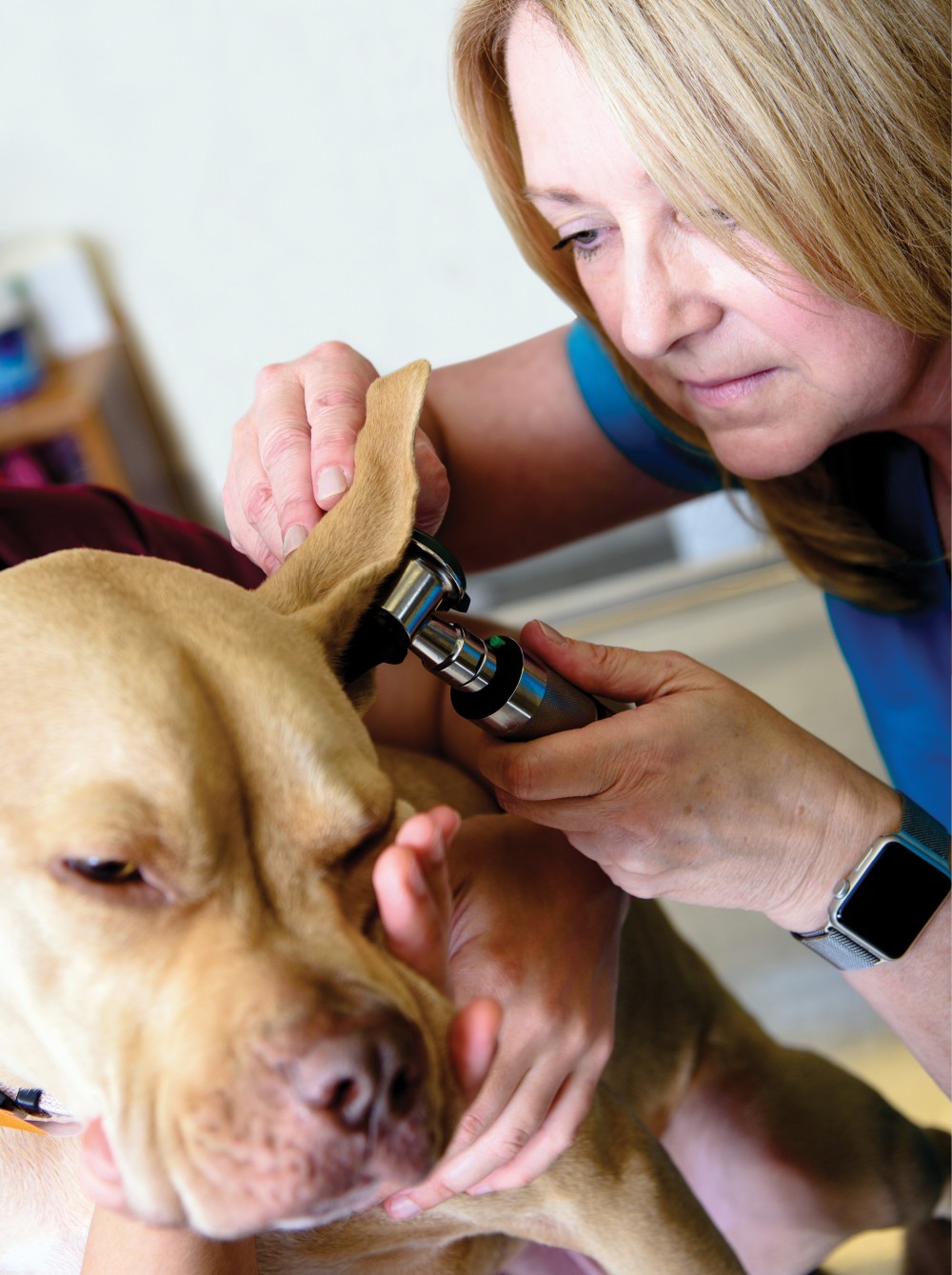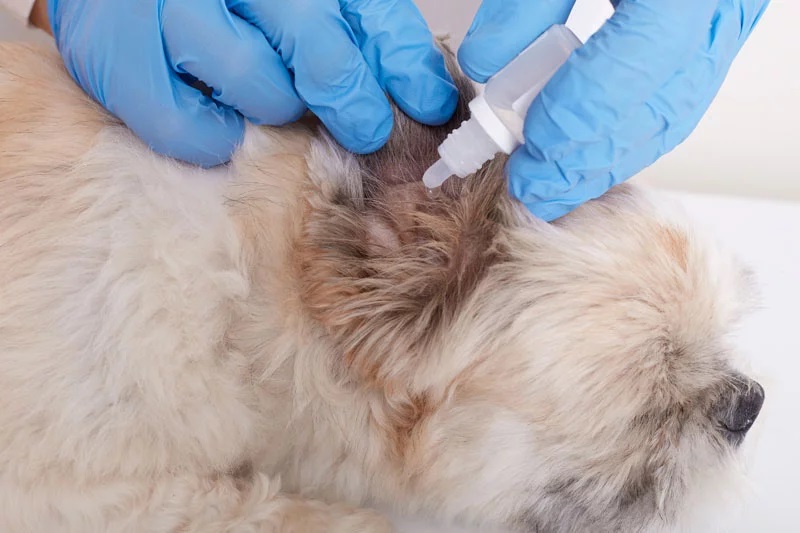Otitis Externa in Dogs
Otitis externa is a common ear infection that affects dogs of all breeds and ages.
It is a painful condition that can cause discomfort and irritation to your furry friend. Understanding the disease, its symptoms, diagnosis, treatment, and prevention is crucial for pet owners to ensure their dogs' well-being.
Otitis externa in dogs is an inflammation of the external ear canal, which is the part of the ear that leads from the outer ear to the eardrum. The condition is usually caused by bacteria, yeast, or mites that infect the ear canal. The infection can be acute or chronic and can lead to serious complications if left untreated.
To diagnose otitis externa in dogs, a veterinarian will perform a physical examination of the ear canal and may take a sample of the discharge for laboratory analysis. Treatment for the condition usually involves cleaning the ear canal and administering topical or oral medications to eliminate the infection. Preventing otitis externa in dogs involves regular ear cleaning, avoiding exposure to water, and maintaining good hygiene.

Disease Description
Otitis externa is also known as external ear infection, and it occurs in the outer ear canal. This condition is often caused by a combination of factors, including allergies, ear mites, and bacterial or yeast infections. Dogs with floppy ears, such as Cocker Spaniels and Basset Hounds, are more prone to developing otitis externa because their ear canals are more susceptible to moisture and debris buildup.
Symptoms
The symptoms of otitis externa can vary in severity, depending on the underlying cause and the stage of the disease.
Some of the most common symptoms of otitis externa in dogs include:
Ear scratching or rubbing
Head shaking or tilting
Pawing at the ear
Ear discharge
Redness, swelling, or inflammation of the ear canal
Odor from the ear
Pain or discomfort when the ear is touched or manipulated
Loss of hearing or deafness
In some cases, dogs with otitis externa may also experience secondary infections, which can cause additional symptoms such as fever, lethargy, and loss of appetite.
If your dog is exhibiting any of these symptoms, it is important to seek veterinary care as soon as possible. Early diagnosis and treatment can help prevent the progression of the disease and reduce the risk of complications.

Diagnosis
The veterinarian will start diagnosis by performing a thorough physical examination of the dog's ear canal, looking for signs of inflammation, discharge, or any foreign objects that may be causing the infection. He/she may also use an otoscope to examine the ear canal and check for any abnormalities.
If the veterinarian suspects an infection, they may take a sample of the ear discharge and examine it under a microscope to determine the type of bacteria or yeast causing the infection. Additionally, they may perform a culture and sensitivity test to determine the most effective treatment for the infection.
In some cases, the veterinarian may recommend further testing, such as blood tests or imaging studies, to rule out any underlying conditions that may be contributing to the ear infection.
It is important for dog owners to bring their pets to the veterinarian as soon as they notice any signs of ear infection, as early diagnosis and treatment can prevent the infection from becoming more severe and causing permanent damage to the ear canal.

Treatment
When a dog is diagnosed with otitis externa, treatment will depend on the severity of the condition. Mild cases may only require cleaning the ear canal and administering ear drops, while more severe cases may require a combination of medications, ear cleaning, and possibly surgery.
The first step in treating otitis externa is to clean the ear canal thoroughly. This will help remove any debris, wax, or discharge that may be present, and allow any medication to penetrate the ear canal more effectively. The veterinarian may use a special cleaning or disinfectant solution to clean the ear canal, or they may recommend an at-home ear cleaning solution that can be used regularly.
After the ear has been cleaned, the veterinarian may prescribe medication to treat any underlying infection or inflammation. This may include antibiotics, antifungal medications, or anti-inflammatory drugs. In some cases, a combination of medications may be necessary to effectively treat the condition.
In addition to medication and ear cleaning, the veterinarian may recommend other treatments to help manage the symptoms of otitis externa. This may include pain medication, topical medicines, antiparasitics, or changing the pet food.

Prevention
Preventing otitis externa in dogs is much easier than treating it. Here are some tips to help prevent your dog from developing this painful condition:
- Regular cleaning of the ears is the most important preventive measure. This can be done using a soft cotton ball or a cloth moistened with a gentle ear cleaner. It is important to avoid using cotton swabs or any sharp objects as they can cause damage to the ear canal.
- Dry your dog's ears thoroughly after swimming or bathing. Moisture in the ear canal can lead to infections.
- Avoid exposing your dog to irritants such as cigarette smoke or harsh chemicals.
- Feed your dog a healthy diet. A balanced diet can help boost your dog's immune system, making it less susceptible to infections.
- Take your dog to the vet for regular check-ups. Your vet can check your dog's ears for any signs of infection and recommend treatment if necessary.
By following these preventive measures, pet owners can reduce the risk of developing otitis external in their dogs. However, it is important to note that some dogs may be more prone to ear infections due to their breed, age, or underlying health conditions. In such cases, it is important to work closely with a veterinarian to develop a customized prevention plan.
Warning: This article is for information only and does not replace professional consultation or examination of the animal by a veterinarian. If you have any doubts about the health of your pet, contact your veterinarian immediately.
05.04.2023

